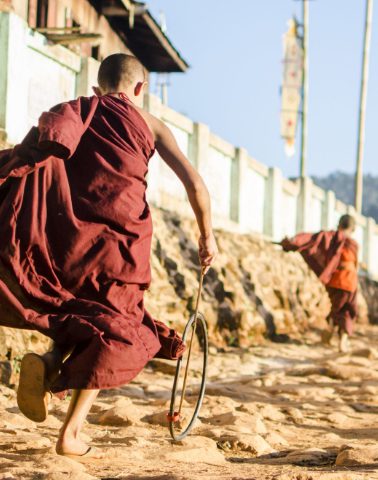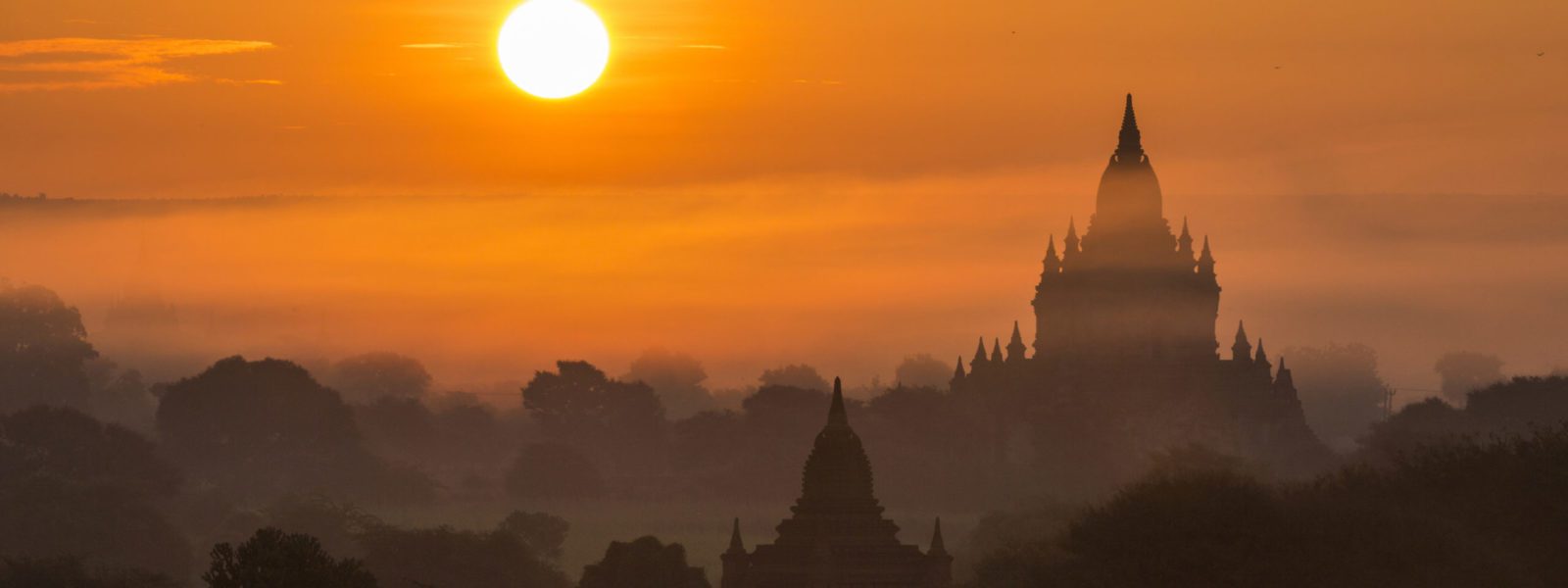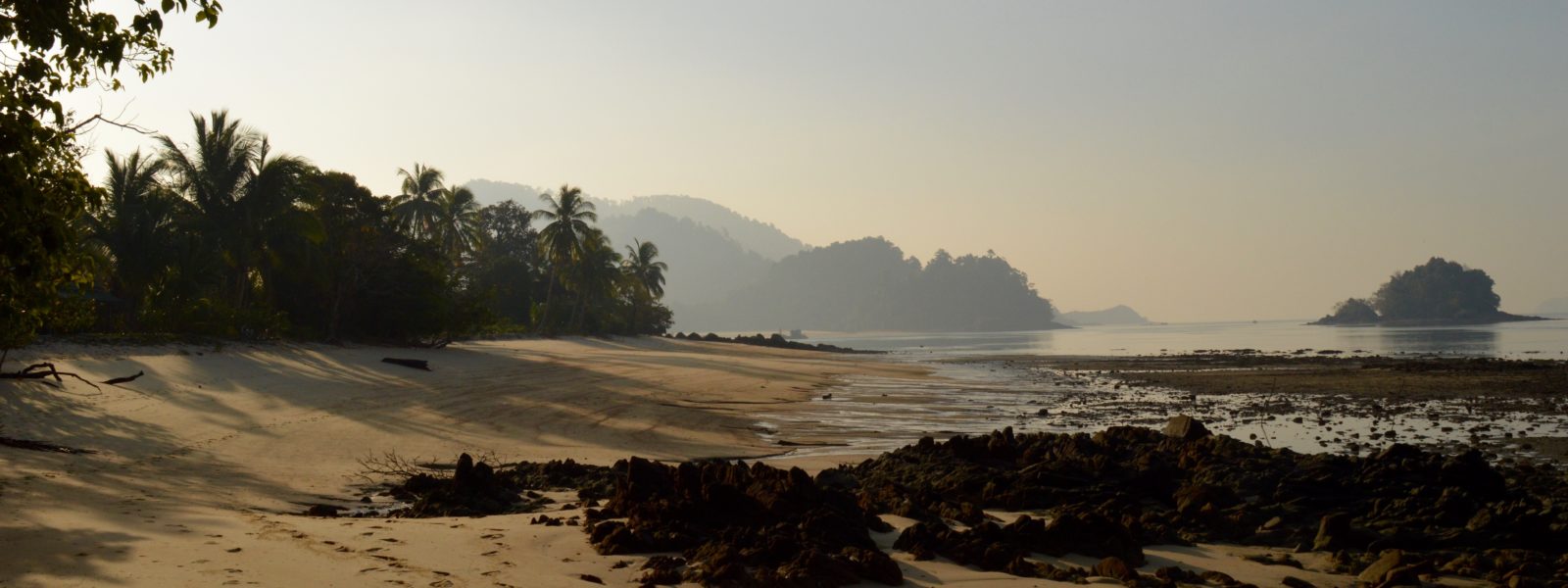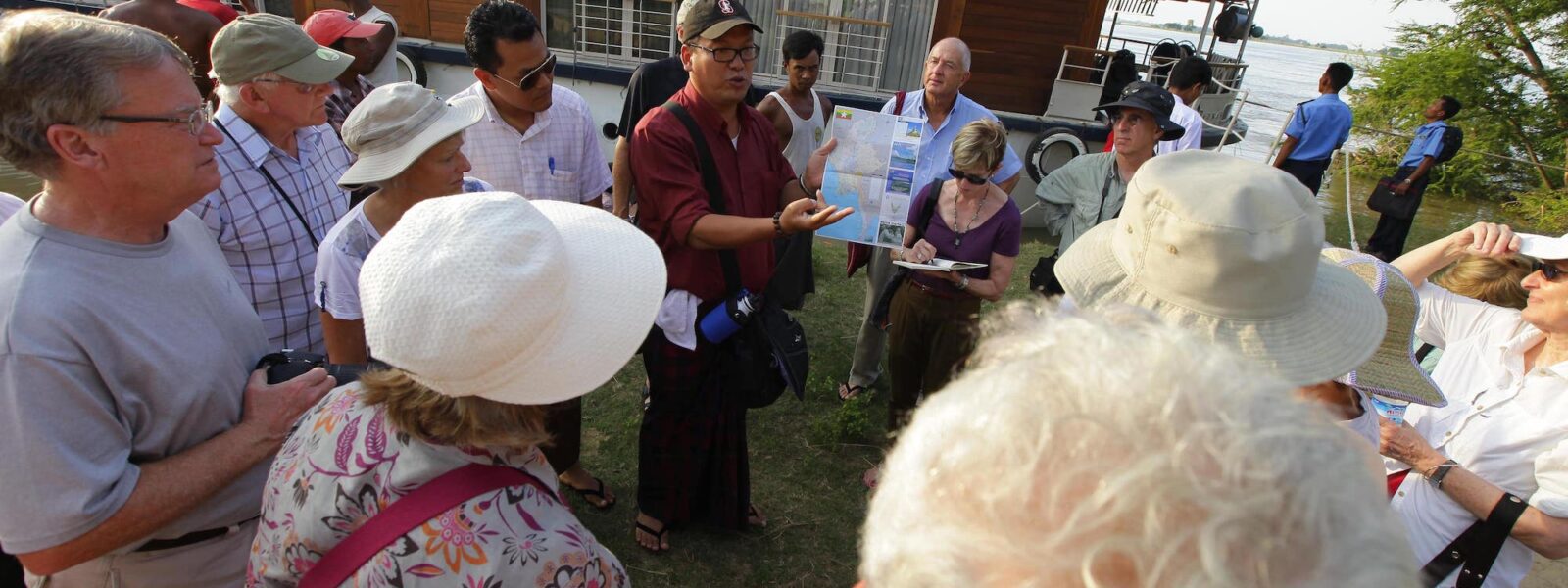
Subscribe to our mailing list
We are still here! Let us send you tips for travelling through Myanmar and stories from the road …
My name is Kenneth and I come from the northern part of the country, quite a remote hill area in Shan State. I am already working in the travel industry for 17 years, in three different languages: English, Chinese, and Japanese. I am not only working within Myanmar but also trying to lead some groups within Southeast Asia and other parts of Asia too. Sometimes also taking my own people all around the world, including the US and Europe.
I am also a freelance trainer for several private tourism training schools and also a volunteer for the Ministry of Tourism, to try to train more ‘new blood’ tourist guides for the future.
Guides are an incredibly important aspect of a trip. However it can sometimes be hard to find good guides outside the main destinations of the ‘Grand Four’ of Yangon, Bagan, Mandalay, and Inle Lake.
Yes. The biggest change in the recent years is this. We started to train in other smaller places, but sometimes because they do not have enough jobs in small destinations, those who are in the middle of the country have to choose Mandalay or Bagan. Perhaps in their own town they have their own tourists, perhaps a few hundred a year, but they cannot survive on this, so they have to come to the more popular destinations. Yangon and Inle Lake is the same.
Now if you go to Kalaw, you can get a trekking guide with basic language skills, but he will not be as fluent as a guide that you can easily get at Inle, because Inle is a main destination, but Kalaw is a small, trekking, destination. We try to change this in recent years. It is improving because there are more individual travelers coming to the local small places, and some of the young generation start to get an income from the visiting tourists.
Some of the time all the bookings happen in the high season. This is a bad habit, or a long tradition going on. Specifically from the end of October to early March it is the nicest time, but in the other times tourists can still enjoy Myanmar. Except maybe the heavy rainy season for two months [July and August].
But the main thing is we don’t promote very well about all the other destinations to the outside world. Perhaps the outside world does not know about the other destinations! So sometimes it seems like all the people come in those certain months, so all hotels become overbooked, and very quickly they become empty again. But there is some small improvement I heard in recent years because not many hotels will close anymore like in the old days. Before they would all close down for four months; rather close them than open to try to reduce the cost. So they would operate for only 8 months of the year. But now it is not as bad as the old days, so at least 80% of the hotels are getting enough tourists to be able to operate in the low season.
In Nyaung Shwe [the town which leads to Inle Lake] there are a lot of choices of nice and charming hotels, but sometimes the travel companies try to send everyone to stay on the lake. But in my experience, in Nyaung Shwe you still have a chance to enjoy the place and the lake at the same time. You are saving money and have the chance to stay in an old town.
It is the same in Bagan, you know, everyone tries to stay in New Bagan and thinks Nyuang U is just a backpacker place. But I don’t think so. Maybe some places, but for some middle-spending travellers or even for some high spending people there are some places that are neat and tidy and charming. These people can happily stay in Nyuang U. But these places are not doing as well as the old archeological site or the riverside in New Bagan. Nyuang U is forgotten and like Nyaung Shwe some nice places are not doing well except for backpackers. That I think we need to fix.

Firstly, you can avoid the crowds. Secondly, you can save 30 or 40% depending on how you plan your choice of hotels. Maybe saving money means that you only have to pay for a 3 star hotel which would be full from October to April.
But the one negative thing would be the Delta and Yangon, which can be more rainy than other destinations. So sometimes you feel like too much rain can stop you doing things. But also, not totally, because the rain is not the whole week. Sometimes there can be 2 days of rain and if lucky you still have enough time to enjoy the place. Sometimes you just want to feel the serenity and if you don’t get the rain, why not choose this time?
Golden Rock, Hpa-An, & Mawlamyine we can call the new ‘Southern Triangle’. It is three destinations and not that long to get to if you don’t include the Yangon downtown busy traffic.
In one trip you can do three places, and visit Mon and Karen States. And if you are a sports person you can do some kayaking in Hpa-An and you can enjoy the river boat ride to see how people live, to see the fishermen along the Salween River to Mawlamyine.
And the other one is a bit more remote, but I really want to suggest people to go is Arakan [Rakhine State]. Mrauk U, is my favourite place. It is really off the beaten track and this year a few mid-range hotels have opened so I don’t think you need to be worried too much about the very expensive or the very cheap hotels, there are some choices in the middle coming up, and that is good for the future. But Mrauk U is mainly for the dry season, as Arakan is on the coast and to ride on the river can be challenging in the monsoon.
I think the southern tip, the whole coastline [Tanintharyi Region]. There are a lot of interesting islands down there. The diving is good, yachting, or kayaking, and quite a lot of marine activities can be included, as well as trekking around remote areas. It is very close to Thailand so if you make a main airport there in five years it will change a lot. And also the drive is becoming not such a big problem.
The main thing now is how our government and how stakeholders in the industry try to put more infrastructure in the region, and not spoil the natural environment in attracting tourists. Healthy development is really important in that place. We can call it ‘responsible tourism’, adding income for locals and not spoiling nature. And the income for locals can help them improve their lives. So I think the coming of the tourists will be welcome.

In general it is still a little bit slow-going.
Because everyone is using a lot of effort to promote the country, but we don’t have a very effective or efficient travel board like they do in many countries; for example the Tourism Malaysia board or the Tourism Authority of Thailand. Such kind of tourism authority from the private sector is giving a lot of correct direction and guidelines for the industry to move forward. But in our country it is not slow-going … And so bureaucratic! For example, in Thailand there was a coup d’etat, but it did not affect tourism! Because the Tourism Authority of Thailand knows what to do to attract tourists. They have a military government – we did, now we don’t. We have a new democratically elected government but our tourism is not developing as in Thailand! We are not even getting the right numbers …
The projected tourism boom never really happened. Or at least not yet. This is good for tourists who wish to visit the country before the rush but it can be tough for the industry.
I think because it is our old way of doing business: not very creative, from top to bottom. And the weak point of the Burmese – they are very helpful, nice people – but they are not very good at co-operation. The stakeholders do not try to sit together, to try and make a greater, bigger picture.
Also, if we want to blame someone, we can always just blame the system! Because of the long dictatorship the people need time to change. Because the real open door [between Myanmar and the rest of the world] has only come in the last 6 or 7 years. So it will take time because the old mechanism is still going on, maybe with new spare parts – that is why it does not walk very well!
I think it can change our political environment a lot and it can enhance the open reforms of the current administration. And also try to help to improve the local economy and also the people as they try to get involved with the outside world.
But the money that tourists come to the country with and spend should more often go to the local level, as a kind of sustainable effect on the people, and not only spend in big hotels and expensive airlines and high-end restaurants. Where the people spend a small amount of money it can benefit many people. Even just a small amount can benefit street vendors, trishaw drivers, small family-run restaurants … This kind of lower level of the society should get some benefit from the tourists.

I came from the hills and I still love the hilly areas. In Northern Shan State there are lots of remote areas but due to security reasons people cannot reach there. I mean, further north than Hsipaw, there is still a beautiful place called Nam Hsan. When the British were here they called it “Little Switzerland”. In Nam Hsan they grow the best tea in the country, the best tea leaves, for tea leaf salad, very unique! But because of some insurgency issues these beautiful places are not easy to get to. Everyone just ended up in Hsipaw – it’s why you see lots of people there because they cannot go much further due to the restrictions!
Also, there is a lack of infrastructure. You can only drive 10 mile per hour! It is difficult and risky because of small level conflicts; not a war, but there are small encounters and conflict going on.
And the other place that I really want to promote or tell people about is the railway on the old Burma Road, across the Gokteik Viaduct. It is the most beautiful railway line – even in the whole of Asia!
My personal likes of Yangon is still just intangible.
I find it really hard to tell you a solid thing that I like very much because it is a combination: the atmosphere, colonial buildings, the food, walking on the streets, sitting on the corner with a very low table and plastic stalls having a cup of tea or a Burmese snack …. Spending only two dollars and still filling your stomach! Wandering around the old book stores … These kind of things are like the essence of Yangon.
Sometimes it is hard to tell you a site or a place. Overall this is a vibrant city, lots of things to see, not just the popular sites but the city itself is very vibrant. You only need to explore … Spend more than one day exploring – by walking! You try the food, meet some locals, see the city going on, see the competition of the modernity coming in with the old buildings, old tradition and the new western culture trying to get a place here! This is the colourfulness of Yangon. This is what I enjoy the most.
It is the best time to come before too many other tourists arrive!
I was in Siem Reap 15 years ago. It was very quiet. Now, big change. Everyday, thousands of tourists landing in Siem Reap. Come to Myanmar before such kind of ‘touristy-ness’. Hong Kong, Taiwan, Korea … Everyday they have about two flights landing in Siem Reap. You cannot get a picture of Angkor Wat without someone in the way. We don’t have that problem yet. So people should come now and see the peacefulness of the country.